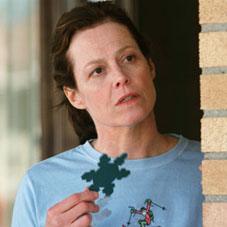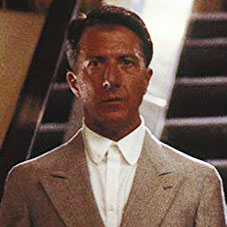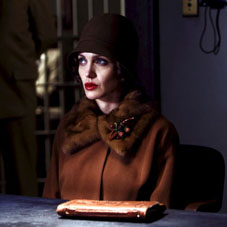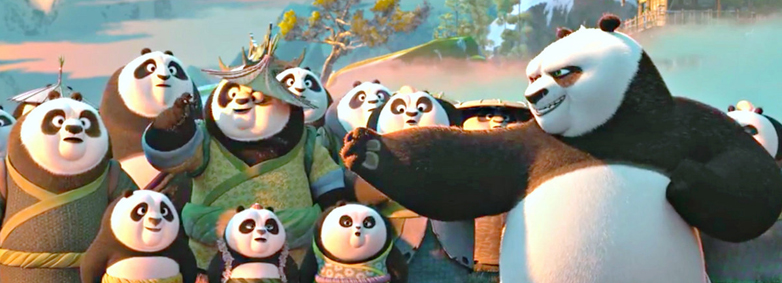I was recently invited to discuss the portrayal of mental health in movies by the lovely people of the No Really, I’m Fine Podcast, and thought I’d share my notes with you.
It begins with recent films Joker and Judy, and ends with One Flew Over The Cuckoo’s Nest, taking in Changeling and Airplane! along the way. I hope you enjoy and/or find this useful.
WARNING: contains spoilers
You can listen to the podcast here and give them a follow @ImFinePodcast_
Joker and Judy are two recent and very different films in which the eponymous characters suffer mental illness in very differing ways, and in doing so the pair conform to a long established pattern of gender division in the portrayal of mental illness in the movies.
Joker is a savage and disturbing thriller starring Joaquin Phoenix an aspiring stand-up comic and part time clown who suffers from a disorder that causes him to laugh at inappropriate times, he’s also generally nervous, lacks confidence and is not good socially.
When his medication and therapy is withdrawn because of funding cuts, he slowly becomes an insane and violent criminal, inspiring riots in the streets.

Judy is a biopic of Hollywood legend Judy Garland, who we see towards the end of her flagging career on stage in London, Renee Zellweger stars in a sympathetic portrait and sees Garland battles with long-standing nerves and addictions, leading to problems in her personal life including fighting a custody battle for her two younger kids, and a difficult fifth marriage.
Joker is a great example of when men in movies suffer mental illness, they typically externalise their problems and make them epic. Men seek to blame and punish others, become violent and their battles take place in a public arena. Male experiences of mental illness are closer to fantasy and framed as heroic, somehow successful, to a degree redemptive, or as in the case of Joker, they become powerful or somehow inspirational.

But when Judy and women suffer mental illness they typically internalise their problems and make them intimate. Women blame and punish themselves emotionally and physically, and their battles take place in the domestic arena. Female experiences are grounded in reality and framed as tragedy.
Plus women’s experiences of mental illness are defined by a perception of promiscuity, and of being a ‘bad’ i.e. neglectful mother, even when that ‘neglect’ is caused by the need to work in order to provide for their children.
It’s notable and typical Joker survives beyond the films end, and Judy doesn’t.
These gender defined portrayals and outcomes are consistent across all forms of mental illness when portrayed in movies, it doesn’t matter what form the mental illness of a character takes. Let’s look at a couple of examples, beginning with an absurdly extreme example to illustrate the point.
Dementia
Still Alice from 2014, is a small intimate, domestic drama which stars Julianne Moore as a middle aged woman diagnosed with Alzheimer’s.
Rise of the Planet of the Apes from 2011, is an epic action sci-fi adventure with John Lithgow suffering Alzheimer’s. His scientist son is trying to find a for cure Alzheimer’s, and along the way unleashes the monkey apocalypse.

Autism
Snow Cake is a 2006 indie romantic comedy drama starring Sigourney Weaver as a small town single woman with Autism, coming to terms with the death of her daughter.
Rain Man is a 1988 Las Vegas road trip comedy-drama starring Dustin Hoffman and is about the reconciliation of two wealthy brothers.

The next example is of deliberately inflicted mental damage, and the one after is a symptom of of mental illness, not a cause. However the gender division remains.
Enforced loss of memory; brainwashing.
Gaslight is a 1944 American psychological thriller starring Ingrid Bergman whose husband slowly manipulates her into believing that she is going insane.
The Bourne Identity is a 2002 action thriller starring Matt Damon who demonstrates advanced combat skills and fluency in several languages as he fights his way across Europe.
Eating disorders
Heathers is a 1988 satirical High school comedy starring Winona Ryder, which as well as touching upon bulimia, shows high school girls struggling with bullying, fat shaming, teenage suicide and violent, toxic boyfriends.
The Machinist is a 2004 dark thriller starring Christian Bale about a troubled factory worker who loses weight due to insomnia caused by a trauma, and eventually achieves salvation and peace.
So in all these examples we see the gender divide of external/internal, public/domestic, epic/intimate and heroic/tragic. Let’s have an example which provides another typical division, sexuality and a violent response.
Multiple Personality Disorder
Split is a 2016 psychological horror thriller starring James McAvoy as a man with 24 different personalities who kidnaps and imprisons three teenage girls. And similar to Joker, he is a super-villain
The Three Faces of Eve is a 1957 mystery drama starring Joanne Woodward as a married but childless woman suffering from a duel personality. Eve ‘White’ is a submissive housewife, while Eve ‘Black’, her ‘other’ personality is outspoken, promiscuous and considered a danger to other people’s children.
Filmmakers couldn’t show Eve having sex in 1957, so her promiscuity is presented in coded form, as dancing with a man other than her husband, who responds by slapping Eve.
This is important as it links madness in woman with promiscuity, and makes clear violence is an acceptable ‘cure’, or at least, a treatment.
Mental illness in men is super-villainy, mental illness in women is promiscuity and mistreating children. Sanity for men is being a superhero, and sanity for women is being married, maternal, monogamous and submissive. And violence is the treatment. Which brings us to hysteria, and hysterical women in the movies.
HYSTERIA
Lets look at the most common mental affliction for women in the movies: Hysteria.
This can either be having a chronic attack of ‘nerves’, intense anxiety, or standing about screaming. It’s very loosely defined, if at all.

Airplane! is a 1980 disaster comedy, the funniest film ever made but not without it’s problems. There’s a joke about a hysterical woman being slapped into submission. First a doctor, shakes her, shouts at her and then slaps her. She continues screaming, and so a fellow passenger steps up to shout, and shake and slap, and behind him is a queue of passengers, and they are armed with boxing gloves, guns and baseball bats.
This joke works because the filmmakers know the cinema audience is totally accustomed to seeing men slapping women when they’re acting hysterically.
I was 11 or 12 years old when I first saw Airplane! and even then I’d seen enough movies to understand the joke.
Hollywood allows, encourages and expects men to inflict violence on women who are mentally ill. Violent ‘treatment’ is justified, accepted, and normal.
The word hysteria comes from the Greek word for uterus, hystera, and the Greeks believed that the uterus moved up through a woman’s body, strangling her, and causing madness.
This suggests an entirely physical cause for the symptoms but, by linking them to the uterus, it means hysteria only affects women. So madness is framed around your gender. And this thinking continued well into the twentieth Century.
Men who don’t have a uterus are inherently sane, women who do, are inherently prone to madness. For women sanity is equated with being passive, submissive, and governable.
Hysteria is a catch-all condition which because it’s definition is so broad, it makes it very easy for doctor’s to identify and treat – usually but not always with violence.

Hysteria is 2011 period drama set in 1880, and starring Hugh Dancy as the real life
Dr. Granville, who treats hysteria.
Because the medical profession thought anxiety originated in the uterus, common practice at the time was to manage the symptoms of hysteria by massaging a woman’s genital area.
Treating so many women results in his hand getting tired. So he adapts an electrical feather duster to use as an electric massager. And invents what we know today as a vibrator.
But the point to this, and remember this is a true story is this is a case of a doctor sexual abusing a mentally ill woman.
During Hysteria a character called Charlotte is arrested and during her trial, the prosecutor recommends Charlotte is sent to a sanatorium and be forced to undergo a hysterectomy, as that would ‘cure’ her.
The important thing to takeaway from Hysteria, the film and the condition, is the link between men diagnosing women as mentally ill, and then using violence and invasive force to subdue them. And here we have another common thread in cinema. A choice between prison or an asylum. We’ll come back to that in Cuckoo’s Nest.
So as well as the public/domestic, epic/intimate, gender division, women are identified as mentally ill for not conforming to men’s ideas of submissive, domestic and maternal womanhood. Also the women are typically punished for their behaviour beyond the expected ‘treatments’, often with death. Here’s a couple of examples, again using different types of mental health for comparison.


Depression
Falling Down is a 1993 thriller starring Michael Douglas who walks across Los Angeles using a bat, a gun and a rocket launcher on those who annoy him.
Revolutionary Road is a 2008 domestic drama starring Kate Winslet as a childless housewife who has extra-marital sex, then an abortion and then dies.
Obsessive Compulsive Disorder
As Good As It Gets is a 1997 romantic comedy starring Jack Nicholson as a misanthropic and obsessive-compulsive novelist whose reward for redeeming his previous bad behaviour is sex with the gorgeous Helen hunt.
Mommie Dearest is a 1981 docudrama starring Faye Dunaway as real life Hollywood star Joan Crawford, who’s depicted as an abusive mother who adopted her children to benefit her career, she is eventually publicly humiliated and dies of cancer.
PTSD
First Blood is a 1982 action film starring Sylvester Stallone as Vietnam War veteran John Rambos suffering PTSD, who destroys a small town in a one-man rampage.
In Our Name is a 2010 British drama starring Joanne Froggatt as a female soldier suffering PTSD, who sexually rejects her husband and struggles to care for her daughter on her return home from a tour of duty.
Schizophrenia
The Soloist is a 2009 drama starring Jamie Foxx as the real life Nathaniel Ayers, a talented but homeless musician who finds some measure of stability.
Through a Glass Darkly is a 1961 Swedish family drama starring Harriet Andersson who childless and sexually aberrant, sexually rejects her husband but has incestuous sex with her brother.
Suicide
It’s a Wonderful Life is a 1946 feel-good sentimental fantasy drama starring James Stewart as George Bailey who attempts suicide on Christmas Eve
The Virgin Suicides is a 1999 drama starring Kirsten Dunst, and sees five suburban teenage sisters suffer depression and make a suicide pact. They are all childless and unmarried, and one is promiscuous.

Criminality
So the gender division leads to women identified as mentally ill for not conforming to men’s ideas of submissive, domestic and maternal womanhood, and are punished for their behaviour beyond the expected ‘treatments’, often with death. Now we’ll see how these signifiers for women’s mental illness are also aligned to criminality.
Dirty Harry is a 1971 neo-noir action thriller which sees a serial killer called Scorpio shooting strangers on the streets of San Francisco, chased by a cop, Clint Eastwood.
Seven is a 1995 crime thriller with Kevin Spacey playing a serial killer, torturing strangers and being chased by a cop, Brad Pitt
Single White Female is a 1992 psychological erotic thriller which stars Jennifer Jason Leigh as a childless and promiscuous singleton who is obsessed with her roommate.
The Hand That Rocks The Cradle is a 1992 psychological thriller starring Rebecca De Mornay as a childless widow out to destroy a woman and steal her family.

Fatal Attraction is a 1987 psychological thriller starring Glenn Close as childless, promiscuous singleton who becomes obsessed with a married man with whom she had an affair.
In all of these films the criminal, man or woman, is killed, reinforcing the idea violence against the mentally ill is acceptable.
But cinema simultaneously aligns female criminality with madness, violent behaviour, promiscuity, childlessness and unmarried.
In all cases cinema is reinforcing a definition of sanity for women, which is to be married, maternal, monogamous and submissive.
And if as a woman you step outside this male definition of female sanity, then expect to be labelled as mentally ill and men are justified in using violence against you, and you may end up dead.Which brings us to Angelina Jolie.

Changeling is a 2008 crime drama based on real-life events from California in 1928, and stars Angelina Jolie as a single woman called Christine, whose son Walter goes missing. But when she’s reunited with him, she realises the boy the authorities insist is her son, is a different boy entirely.
She is naturally angry and upset, which as a woman is not the correct mental state to be challenging the State’s authority, as being ’emotional’ allows the police and local government to define her behaviour as irrational, i.e. a sign of mentally illness, and she is vilified as delusional, labeled as an unfit mother, and confined to a psychiatric ward
A doctor diagnoses Christine as delusional and forces her to take mood-regulating pills. Steele says he will release Christine if she admits she was mistaken about “Walter” she refuses. And the film doesn’t end well for anyone.
So cinema shows women being labelled as irrational is an excuse for any manner of abuse by the state and/or medical profession.
And under the guise of ‘treatment’ a woman may suffer incarceration, drug regimes, invasive surgery and/or lobotomy, as well as losing possession of her kids. And the criteria for judging the success of any treatment is how submissive and quiet the female patient is afterwards.
Another criteria for madness is not being maternal, not liking children, women are forced into domesticity and punished when they fail. being labelled a bad mother makes it very easy for the authorities to teak your kids away from you.
There is no happy ending to this film. But it does show some of the nasty ways the mentally ill are treated in asylums.
One Flew Over The Cuckoo’s Nest
I love this film, made in 1975, and was the 2nd of only 3 films have won all four top Oscars, best actor, actress, film, and director.
It was filmed film in a real mental hospital, in the Oregon State Hospital, and consequently is very good on visualising the mechanics of mental health treatment, the bars on the windows, the forced drugs, the physical restrictions such as strait jackets, and the barbaric use of electro-shock treatment.

Remember how in Hysteria a character faced being sentenced to either prison or an asylum?
Cuckoos Nest starred Jack Nicholson as convicted sex offender Randall McMurphy, who chooses asylum over prison because he wants to avoid a regime of hard labour to which he’s been sentenced. McMurphy thinks the asylum offers an easier existence, and he is of course, very wrong.
The central conflict in the film is between McMurphy and Louise Fletcher’s Nurse Ratched, who runs the hospital ward to which he is restricted.

Presenting a sex offender as a hero was problematic, even for the 1970’s, and so the filmmakers down play the reason McMurphy is in the hospital, with his criminal behaviour rarely referred to beyond the opening scene.
And in the way Airplane! uses the audiences knowledge of cinema conventions to make a joke about hysteria, the filmmakers use the audiences knowledge of cinematic sanity to portray McMurphy as heroic, and to demonise Ratched.
McMurphy’s sanity is emphasised by showing him indulge with cinema’s male signifiers of sane male behaviour, such as playing cards and basketball, drinking, and having sex with a woman.
And it demonises the film’s authority figure Nurse Ratched by aligning her with cinemas traits of female insanity and criminality, such as being non-maternal, non-sexual, and non-submissive.
We’re asked to sympathise with and support an unpenitent rapist, a drunk, a brawler and gambler, and one who isn’t ill but wanting to avoid hard labour. Whereas the person we should be rooting for is the hard working and dignified professional, Nurse Ratched who’s been lumbered with the disruptive McMurphy.
In mental health in the movies, when woman succeed they remain defeated, and when men fail, they still win. It’s well, La La land.
ENDS.
Further reading:
Portrayal of schizophrenia in movies
https://www.autism.org/movies-featuring-asd/
The below is from the World Health Organisation website:
There are many different mental disorders, with different presentations. They are generally characterized by a combination of abnormal thoughts, perceptions, emotions, behaviour and relationships with others.
Mental disorders include: depression, bipolar affective disorder, schizophrenia and other psychoses, dementia, intellectual disabilities and developmental disorders including autism.
Dementia is caused by a variety of diseases and injuries that affect the brain, such as Alzheimer’s disease or stroke.
https://www.who.int/en/news-room/fact-sheets/detail/mental-disorders
Nemo’s Fury is an exciting digital reinvention of Jules Verne’s classic steampunk adventure novel, 20,000 Leagues Under the Sea.
Download for free to your smartphone or tablet, search your app store for ‘Nemo’s Fury’.
A mobile interactive fiction game employing a bespoke combat system and hundreds of original illustrations, Nemo’s Fury is inspired by the 1980’s role-playing gamebooks such as ‘The Warlock of Firetop Mountain’, of the Fighting Fantasy series which celebrated its fortieth anniversary last year.
Each player joins the legendary Captain Nemo on board his fabulous submarine, the Nautilus, on a wild voyage of adventure, intrigue, loyalty, and betrayal.
There’s mayhem, monsters, maelstroms and murder as Nemo takes you from the South Pacific to the Northern Atlantic via Antartica and the Red Sea. And if they survive long enough, the player will of course fight a giant squid.
Available on your smartphone or tablet, (but not yet your desktop), click on your app store below
Or go to Nemo’s Fury for more info






You must be logged in to post a comment.